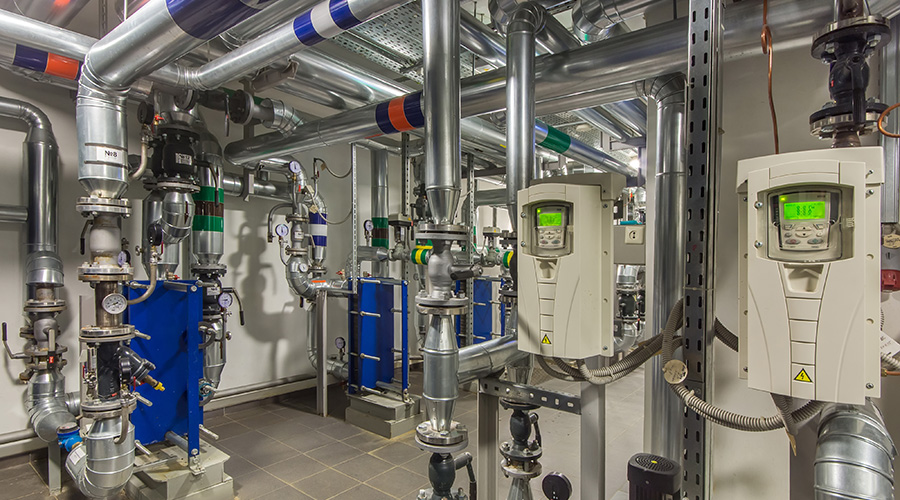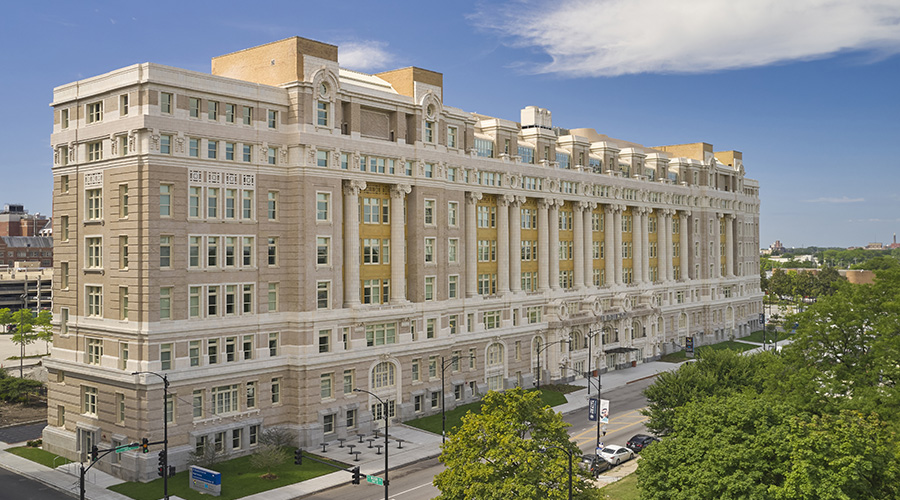Energy-Efficient Cladding Can Reduce Heating, Cooling Loads
OTHER PARTS OF THIS ARTICLEPt. 1: This Page
Commercial buildings currently account for roughly 18 percent of the energy use and greenhouse gas emissions in the United States. At current utility rates, this translates to about $63 billion a year. Around 27 percent of the energy used for commercial buildings is devoted to heating and cooling loads. That equals five percent of the energy used in the nation, or $17 billion used every year simply to heat and cool commercial buildings.
In general, there are two ways to reduce the heating and cooling loads in a building: replace the HVAC systems with more energy efficient systems or reduce the loads on the system. One way to reduce the loads is to install energy-efficient cladding. Energy efficient cladding systems have a higher thermal resistance and fewer thermal breaks than typical cladding systems, so less energy is required to heat and cool the building.
Two of the most common energy efficient cladding systems in the market today are exterior insulation and finish systems (EIFS) and insulated metal wall panels. EIFS is a lightweight cladding that can imitate the appearance of numerous building materials, including brick, stone, metal panels, siding and stucco. It can also be used as a retrofit over existing claddings. Compared to many of the systems that EIFS can imitate, it is a cost-effective system in terms of both materials and installation costs.
EIFS consist of expanded polystyrene foam insulation installed with mechanical fasteners or adhesives to the substrate, a water-resistant base coat applied to the top of the insulation, glass fiber or expanded metal reinforcing mesh, and a finish coat. In the past, moisture problems have occurred with EIFS throughout the United States. As a result, most EIFS today include a water-resistant barrier installed behind the EIFS to provide a drainage path for any incidental water that may enter the system.
Insulated metal wall panels consist of two prefabricated metal panels, typically steel or aluminum, with a polyurethane and polyisocyanurate foam core. The foam is applied in the form of liquid chemicals and expands to fill the cavity and fuse with the metal skins. The insulated metal wall panels attach directly to the supporting structure of the building. The system relies on the impermeability of the metal to prevent water from entering the system.
Wide ranges of sizes, colors, textures and finishes are available for insulated metal panels. The panels can also be oriented both vertically and horizontally to create visually interesting structures. During a renovation, the insulated metal panels can be easily removed and reinstalled or installed on a different building. The metal content of the panels can be recycled when the panels are no longer needed. The cost of materials is generally higher for this system than standard wall systems; however, the panels are lightweight and easy to install, which helps save on cost.
Continuous Thermal Barrier
Both the EIFS and insulated metal wall panels have a similar insulation design compared to standard exterior wall insulation. In standard exterior walls, there is stud framing inside of the cladding system and insulation is placed between these studs. The areas around the studs are not insulated and the studs themselves provide a parallel heat conduction path from the interior to the exterior of the building. These paths reduce the effectiveness of the insulation within the studs to only 33 percent.
On the other hand, EIFS and insulated metal wall panels have the insulation within the cladding system, which provides a continuous insulated barrier around the exterior of the building. This barrier increases the ability of the wall system to prevent heat transfer and reduces the thermal energy load on the building. Typically, an EIFS system has a thermal resistance of R-4 to R-24, depending on the thickness of the insulation. This exterior layer is often used in conjunction with standard cavity insulation. Insulated metal panel systems have a thermal resistance of R-14 to R-30, depending on the insulating core used and its thickness. Insulated metal panels are a preferred construction method for building with refrigerated environments because they have up to 95 percent thermal efficiency.
In a two-phase study, sponsored by the U.S. Department of Energy — through the Office of Energy Efficiency and Renewable Energy’s Building Technologies Program — and the EIFS Industry Members Association (EIMA), different assemblies of EIFS were compared over a two-year period with brick, stucco and cementitious fiberboard siding. Testing included energy efficiency, moisture intrusion, and temperature control. The results showed that EIFS outperformed other systems, though the results were dependent on the specific EIFS assembly, accuracy of installation and type of water-resistive barrier used.
Considerations
When planning to use energy-efficient cladding either in new construction or during a retrofit, there are some considerations to keep in mind. The most important item is to choose a qualified installer. Many of the water infiltration problems associated with EIFS can be traced back to improper installation of details at penetrations. Improper installation of the system can also lead to thermal breaks and excess ventilation, which can reduce system efficiency.
In new construction, look at the building as a whole. Proper details are needed between the cladding system and the structural and glazing systems to prevent failures. The mechanical equipment must take into account the overall efficiency of the building, including contributions from the cladding system, to be sized correctly. Oversized equipment is expensive to install and operate.
Before completing a retrofit, perform an assessment of the building. Look for deficiencies in the structural system and signs of water infiltration. Any issues should be addressed properly before the new cladding system is attached. Otherwise, the problem will continue to worsen beneath the new cladding, which can lead to failures and loss of efficiency. Check for other improvements that can be completed at the same time as the cladding retrofit to improve the quality of the building and save on overall construction costs.
Energy-efficient cladding systems still have standard maintenance that will occur over the lifetime of the cladding. All joints and penetrations should be inspected on a regular basis. Sealant joints and flashing should be replaced as necessary. The systems should be cleaned on a regular basis to prevent buildup of pollutants. 
Kristina Koepke, E.I.T., is a staff engineer with Facility Engineering Associates. Her project experience includes roof and facade assessments and structural wood evaluations.
Related Topics:












